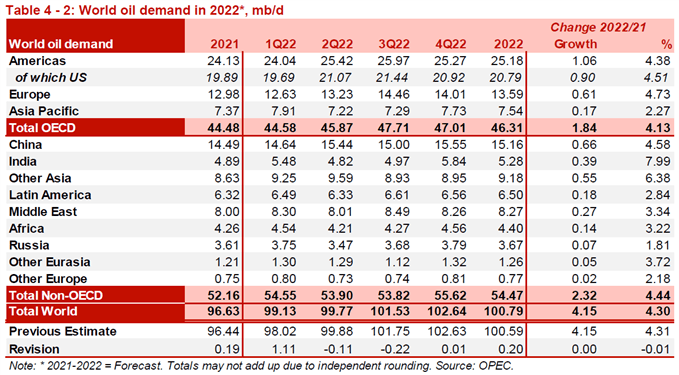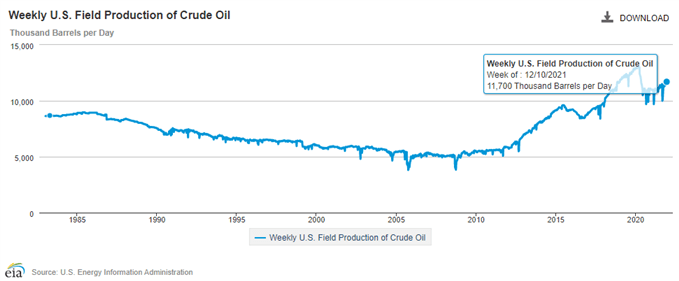The price of oil may face a bear market in the first quarter of 2022 as it falls nearly 20% from the 2021 high ($85.41). At the same time, expectations for stronger demand along with ongoing supply constraints may keep crude prices afloat as the Organization of Petroleum Exporting Countries (OPEC) plans to “adjust upward the monthly overall production by 0.4 mb/d for the month of January 2022.”
OPEC Retains Upbeat Outlook for World Oil Demand
The upward trend in the price of oil seems to have unraveled as US President Joe Biden pledges to work with China “to address global energy supplies.” Meanwhile, the rapid spread of the Omicron variant may produce headwinds for crude as a growing number of countries reestablish travel as well as social resistrctions in response to rising COVID-19 cases.
However, OPEC and its allies appear to be undeterred by the new strain as the December 2021 Monthly Oil Market Report (MOMR) points out: “4Q21 oil demand was adjusted slightly lower mainly to account for COVID-19 containment measures in Europe and their potential impact on transportation fuel demand, as well as the emergence of a new COVID-19 variant (Omicron).”
As a result, “total world oil demand is anticipated to reach 96.5 mb/d on an annualized basis in 2021.” The report goes on to say that “in 2022, world oil demand growth was also kept unchanged at 4.2 mb/d and total global consumption at 100.6 mb/d.”

The upbeat outlook is based on the assumption that “the impact of the new Omicron variant is projected to be mild and short-lived, as the world becomes better equipped to manage COVID-19.” Expectations for strong demand may keep OPEC and its allies on course as the group takes a gradual approach in restoring production to pre-pamdemic levels.
Slow Recovery in US Oil Output to Keep Crude Production Well Below Pre-Pandemic Levels
Forecasts for strong demand along with OPEC’s gradual approach in restoring production may help crude to avoid a bear market, and developments coming out of the US may keep the price of oil afloat amid the slow recovery in crude output.

Source: US Enegry Information Administration
US output has recovered from the disruptions caused by Hurricane Ida as production slipped to 10,00K in September. Recent figures from the Energy Information Administration (EIA) show weekly field production holding steady at 11,700K in the week ending December 10, which remains well below the record high print of 13,100K in March 2020.
In summary, the growing response to the Omicron variant may drag lower the price of oil over the near-term, but the price may avoid a bear market as forecasts for strong demand are met with a tepid recovery in global supply.


Be the first to comment